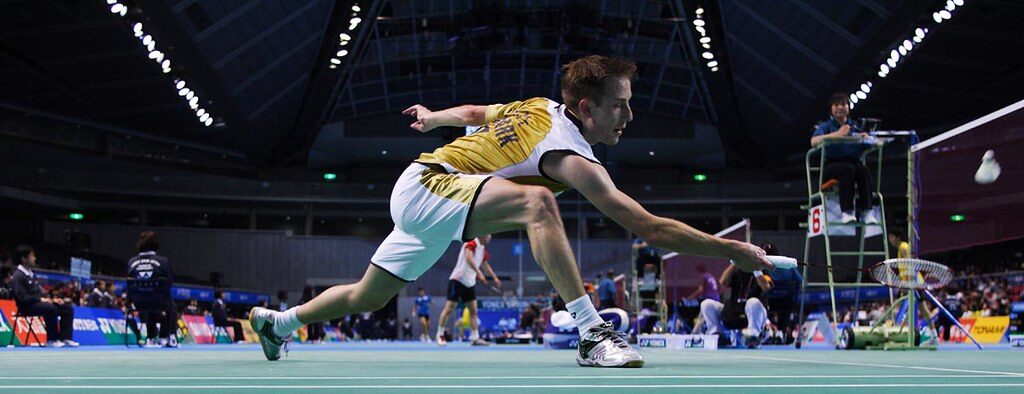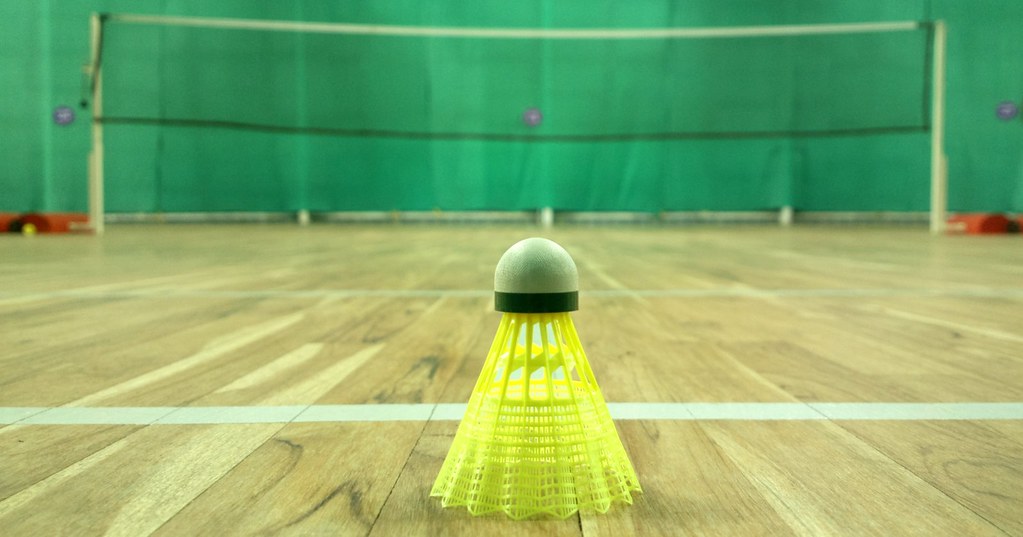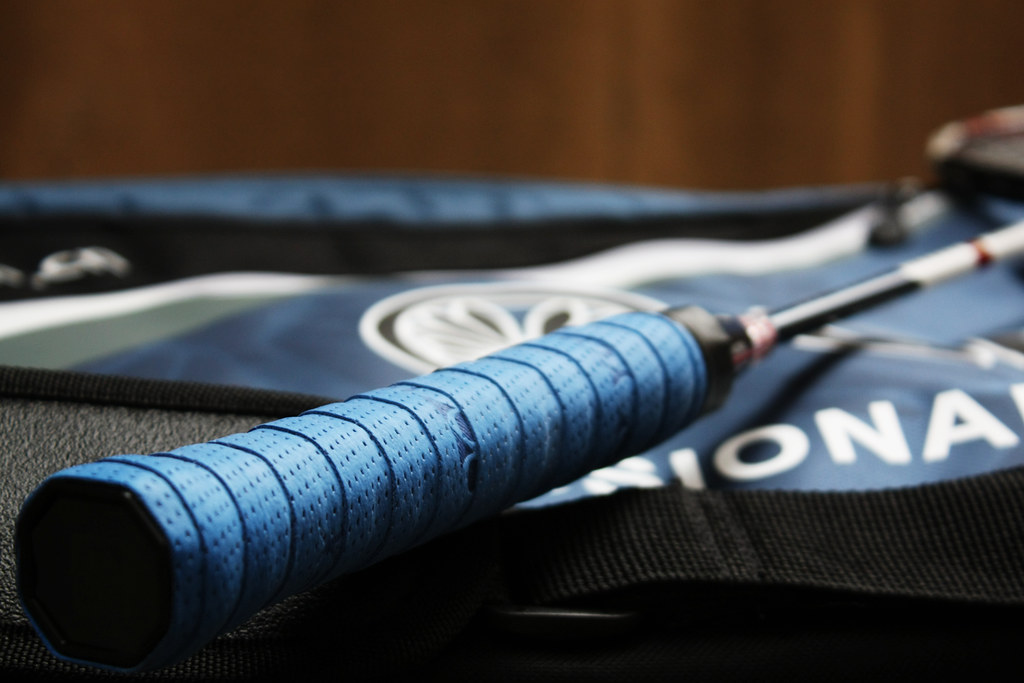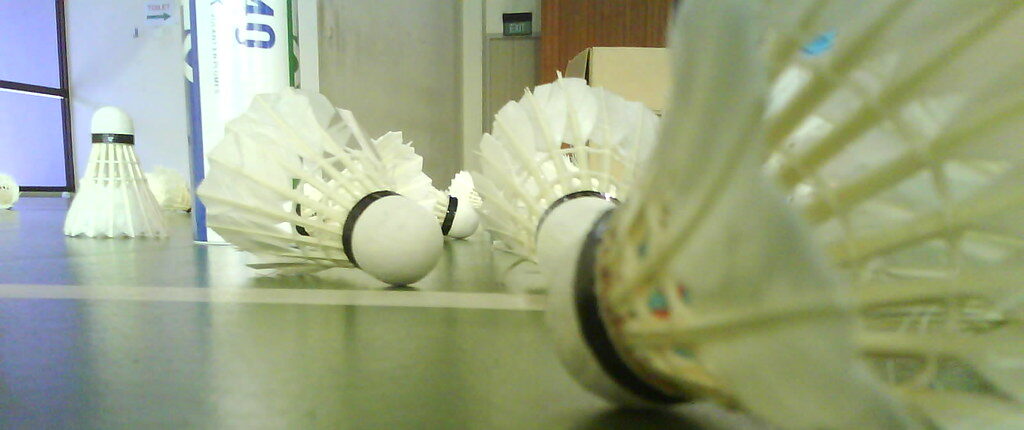Having the right equipment is crucial to performing at your best and enjoying the game. From rackets and shuttlecocks to shoes and clothing, there are a variety of badminton basic and professional equipment items that can make a big difference in your performance on the court. But essentially, what equipment is needed to play badminton at beginner or advanced level and what is the best badminton equipment to use?
Table of Contents

Badminton Equipment that improves performance
Rackets
Badminton rackets are an essential piece of equipment for players of all levels in the sport of badminton. Rackets come in a variety of shapes, sizes, and weights, and choosing the right one can greatly impact your game. The right racket can help you generate more power, control your shots with greater precision, and improve your overall performance on the court. If you want to invest some money to have professional badminton equipment, you can start here and in badminton shoes.
There are several factors to consider when choosing a badminton racket, including weight, balance, and string tension. A lighter racket is generally easier to handle and manoeuvre, making it a good choice for beginners, while a heavier racket can provide more power and control for advanced players.
The balance of the racket refers to the distribution of weight between the head and handle of the racket. A racket with a head-heavy balance can help generate more power and is often favoured by attacking players. In contrast, a racket with a handle-heavy balance can provide more control and is often preferred by defensive players.
The string tension of the racket also plays an important role in the feel and performance of the racket. A higher string tension can provide more power and control but can also make the racket less forgiving on off-centre shots, while a lower string tension can offer more forgiveness but may sacrifice some power and control.
Ultimately, the best badminton racket for you will depend on your individual playing style, skill level, and personal preferences. Whether you are a beginner or a seasoned professional, taking the time to choose the right racket can help you improve your game and enjoy the sport even more.
Shoes
Badminton shoes are an important piece of equipment for any badminton player. The right shoes can provide the support, stability, and traction you need to perform at your best on the court, while also helping to prevent injuries.
Badminton shoes are designed with several key features that make them ideal for the sport. They typically have a non-marking sole that provides excellent grip on the court without leaving scuff marks. They also have a lightweight and breathable design that helps to keep your feet cool and comfortable during intense matches.
One of the most important features of badminton shoes is their support and stability. Badminton involves a lot of quick lateral movements and changes in direction, so it’s important to have shoes that can provide the support and stability you need to avoid injuries. Badminton shoes often have extra cushioning and support around the ankle to help prevent sprains and twists.
When choosing badminton shoes, it’s important to consider your playing style, foot shape, and personal preferences. Different shoes may be better suited for players who prefer to play at the front of the court versus those who play at the back, for example. It’s also important to choose shoes that fit well and provide the support and comfort you need to play your best.
Overall, investing in a good pair of badminton shoes can significantly improve your performance on the court and help you enjoy the sport even more.

Shuttles
Feather badminton shuttles are the preferred choice of advanced and professional badminton players due to their superior flight and performance characteristics. These shuttles are made using the feathers of ducks or geese, and are known for their exceptional speed, accuracy, and consistency in flight.
One of the main advantages of feather shuttles is their aerodynamic design, which allows them to travel faster and with greater accuracy than plastic shuttles. They also provide a more natural feel when struck with a racket, and are able to withstand high speeds and forces without deforming or breaking.
However, feather shuttles also require more maintenance and care than plastic shuttles. They can be easily damaged if mishandled, and must be stored in a cool and dry place to prevent damage to the feathers. Additionally, feather shuttles are more expensive than plastic shuttles, which makes them less accessible to recreational players.
Despite their higher cost and maintenance requirements, feather shuttles are preferred by advanced players due to their superior performance and feel on the court. They are the shuttlecock of choice for professional tournaments and matches, and are an essential piece of equipment for serious badminton players.
Racket Strings
Badminton strings are an important component of a badminton racket that greatly affects its performance. The strings are responsible for transferring the player’s power and control to the shuttlecock, and therefore, it is crucial to choose the right strings based on your playing style, skill level, and personal preference.
The two main types of badminton strings are natural gut and synthetic. Natural gut strings, made from cow intestine, offer the best combination of power, touch, and feel. They are the most expensive type of string and require more maintenance and care than synthetic strings.
Synthetic strings, on the other hand, are made from materials such as nylon, polyester, or Kevlar. They are less expensive than natural gut strings and require less maintenance. Synthetic strings can be either thicker or thinner, with thinner strings providing more control and thicker strings providing more power.
When selecting strings, players should also consider the racket’s string tension. String tension refers to the amount of force applied to the strings when they are strung onto the racket. Higher tension strings offer more control and precision, while lower tension strings offer more power and forgiveness.
Players can experiment with different types of strings and tension levels to find the best combination for their playing style. It is important to restring your racket periodically to maintain optimal performance and prevent damage to the strings.
Overall, badminton strings play a significant role in a player’s ability to control the shuttlecock and perform at their best on the court. By choosing the right strings and maintaining them properly, players can greatly enhance their badminton game.
Grips

Badminton racket grips are an important component of a badminton racket that affects a player’s comfort and control on the court. The grip provides a comfortable, non-slip surface for the player to hold onto, and can greatly improve the player’s ability to control the racket during play.
Badminton grips come in a variety of materials, including synthetic and natural materials such as leather or cork. Synthetic grips are the most common and are typically made from materials such as polyurethane or synthetic leather. These grips offer good durability and moisture absorption and are available in a variety of colours and textures.
Natural grips, such as leather or cork, are less common but offer a more premium feel and better moisture absorption than synthetic grips. These grips are typically more expensive and require more maintenance than synthetic grips.
When selecting a grip, players should consider the size, texture, and thickness of the grip. A grip that is too large or small can affect the player’s ability to hold the racket comfortably, while a grip that is too thick or thin can affect the player’s ability to control the racket during play.
Players can also use overgrips, which are thin, synthetic grips that are wrapped around the existing grip to provide additional comfort and grip. Overgrips can be easily replaced as they wear out, allowing players to maintain optimal grip performance over time.
Overall, badminton racket grips are an essential piece of equipment that can greatly impact a player’s comfort and control on the court. By selecting the right grip for their playing style and maintaining it properly, players can greatly enhance their badminton game.

Badminton Bags
Badminton bags are an essential accessory for badminton players who need to transport their rackets, shuttlecocks, and other equipment to and from the court. These bags come in a variety of styles, sizes, and designs to suit the needs of different players.
Most badminton bags feature multiple compartments to store rackets, shoes, clothes, and other accessories. The main compartment is typically designed to hold rackets, and may include additional padding or compartments to protect them during transport. Some bags also include separate compartments for shoes or wet clothes to keep them separate from the rest of the equipment.
Badminton bags can be made from a variety of materials, including nylon, polyester, and leather. Nylon and polyester bags are lightweight and durable, making them popular choices for most players. Leather bags are more expensive and offer a more premium look and feel, but may not be as durable as their synthetic counterparts.
In addition to the standard shoulder bag style, there are also backpack-style badminton bags that allow players to carry their equipment more comfortably and conveniently. These bags distribute the weight of the equipment evenly across the back and shoulders, making it easier to carry for longer periods of time.
Players should consider their needs and preferences when choosing a badminton bag. Factors to consider include the size and number of compartments, the material and durability of the bag, and the style and design of the bag. Ultimately, the right badminton bag can help players keep their equipment organized, protected, and easily transportable to and from the court.
Clothing
Badminton clothing is an essential part of a player’s equipment that can greatly impact their comfort and performance on the court. Badminton clothing should be lightweight, breathable, and allow for a full range of motion to help players move freely and comfortably during play.
Common types of badminton clothing include shorts, skirts, t-shirts, and tank tops. These garments are typically made from synthetic materials such as polyester or nylon, which are lightweight, moisture-wicking, and quick-drying.
Badminton clothing may also feature specific design elements to improve performance, such as mesh panels for increased ventilation, and stretchy or elasticized materials to allow for a full range of motion. Some clothing may also include built-in compression for added support and improved blood flow during play.
It is also important for players to choose clothing that fits well and allows for a full range of motion. Loose-fitting clothing may get caught on rackets or other equipment, while tight-fitting clothing may restrict movement and cause discomfort during play.
In addition to these general considerations, players should also consider any specific requirements or regulations for their level of play. For example, some tournaments may require players to wear specific colors or styles of clothing.
Overall, badminton clothing plays an important role in a player’s comfort and performance on the court. By choosing the right clothing and ensuring it fits well, players can focus on their game and perform at their best.
Accessories
Badminton accessories refer to the additional items that players use to enhance their performance and overall experience on the court. These accessories may include a wide variety of items, such as training aids, electronic devices, and various other specialized accessories.
Training aids are one type of badminton accessory that can help players improve their strength, endurance, and technique. These may include items such as weighted rackets or shuttlecocks, resistance bands, and agility cones or hurdles.
Electronic devices are another type of badminton accessory that can provide players with valuable data and insights to improve their game. These may include devices such as shuttlecock sensors or performance trackers that can measure factors like shuttlecock speed, stroke accuracy, and footwork.
Other specialized accessories can also enhance a player’s performance or comfort on the court. For example, sweatbands, headbands, and wristbands can help players stay cool and dry during play. Players may also use specialized socks or insoles designed for badminton, which can provide additional support and traction on the court.
Badminton accessories can be used by players of all levels, from beginners to professionals. By selecting the right accessories for their individual needs and preferences, players can improve their game and enjoy a more comfortable and enjoyable badminton experience.
That was a look at the equipment you need to play badminton and if you have any questions or need help, reach out to our team at Badminton Radar to help you further.
FAQs
What equipment is used in badminton?
Badminton basic and professional equipment includes a racket, shuttlecock, and appropriate footwear. The racket is typically made of lightweight materials while the shuttlecock can be made of feathers or synthetic materials. Good footwear with non-slip soles is essential to prevent injury and improve performance on the court.
Which equipment is most important in badminton?
The badminton racket is the most important equipment in badminton. It is essential to choose a racket that suits your playing style and skill level to maximize your performance on the court. Other important equipment includes shuttlecocks, shoes, and appropriate clothing.
What are the 5 major parts of badminton racket?
The 5 major parts of a badminton racket are the head, strings, shaft, grip, and handle. The head contains the stringed area, the shaft connects the head to the grip, and the handle provides a comfortable grip for the player.
What makes this badminton equipment unique?
Badminton’s various equipment is unique for its lightweight racket, shuttlecock, and court design. The shuttlecock’s aerodynamic design creates a unique gameplay where the shuttle can be hit with high speeds, making the game dynamic and exciting. The court design with a net in the center and markings on the ground makes it easy to follow the game.
How much does badminton equipment cost?
The cost of badminton’s various equipment can vary depending on the quality and brand of the items. A basic set including a racket and shuttlecock can cost around $20-30, while more advanced equipment can cost several hundred dollars.